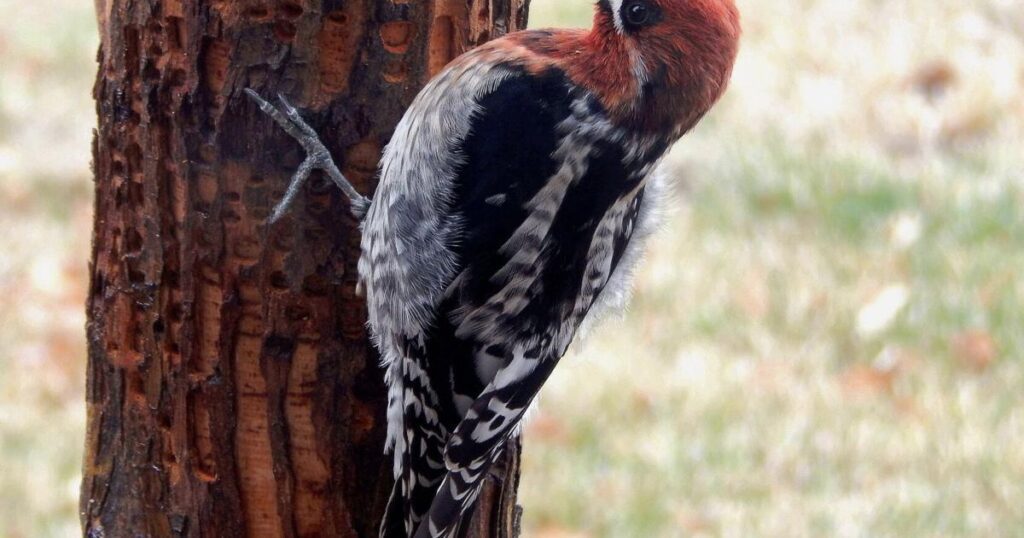Chris Naftel took this photo at his home in Bear Valley Springs of a red-breasted sapsucker (Sphyrapicus ruber) that was feeding at a tree.
Sapsuckers are a type of woodpecker that get their name from an unusual strategy they employ to feed themselves: They drill a series of small shallow holes in trees, and then revisit these holes, called sapwells, to lap up the nutritious tree sap that oozes from the holes.
In this way, the sapsuckers are similar to people who tap sugar maple trees to obtain sweet sap that is boiled down to make maple syrup.
To make their sap-gleaning process more efficient, sapsuckers have shorter tongues than other woodpeckers, and their tongues also have tiny bristles at the end, to help create a kind of brush for collecting sap.
Sapsuckers tend to be fairly orderly with their sapwells — they typically drill horizontal rows of them on the same tree trunk. The birds must revisit them regularly to harvest the little droplets of sap that form, and also to do some fresh drilling so that the sap will continue to flow.
If they don’t, the tree will seal off the sapwell.
Other creatures benefit from the sapwells made by sapsuckers — hummingbirds will drink from sapwells when flowers aren’t available, and small mammals and many kinds of insects will also help themselves. Insects that get caught in the sticky sap then become an additional food resource for the sapsuckers, since these birds also prey on insects, and don’t live on sap alone.
There have been 11 different species of woodpeckers sighted in the Tehachapi Mountains, including four different species of sapsuckers. Red-breasted sapsuckers are the most widespread, and can been encountered each season of the year.
The Nuwä (Kawaiisu or Southern Paiute) word for woodpecker is tatarage’eb, pronounced tah-tah-rah-GEH-eb, in an approximation of the sound a woodpecker makes when drilling into a tree.
NATURAL SIGHTINGS is a regular feature of the Tehachapi News edited by Jon Hammond that showcases photos of the natural beauty that enhances the quality of life in Tehachapi. If you have a good quality image of plants, animals, insects, trees, birds, weather phenomena, etc., taken in the Tehachapi area, you may submit it to the Tehachapi News for possible publication. Submissions can be dropped by the News office in the form of a print or CD, or sent by email to: editorial@tehachapinews.com.

